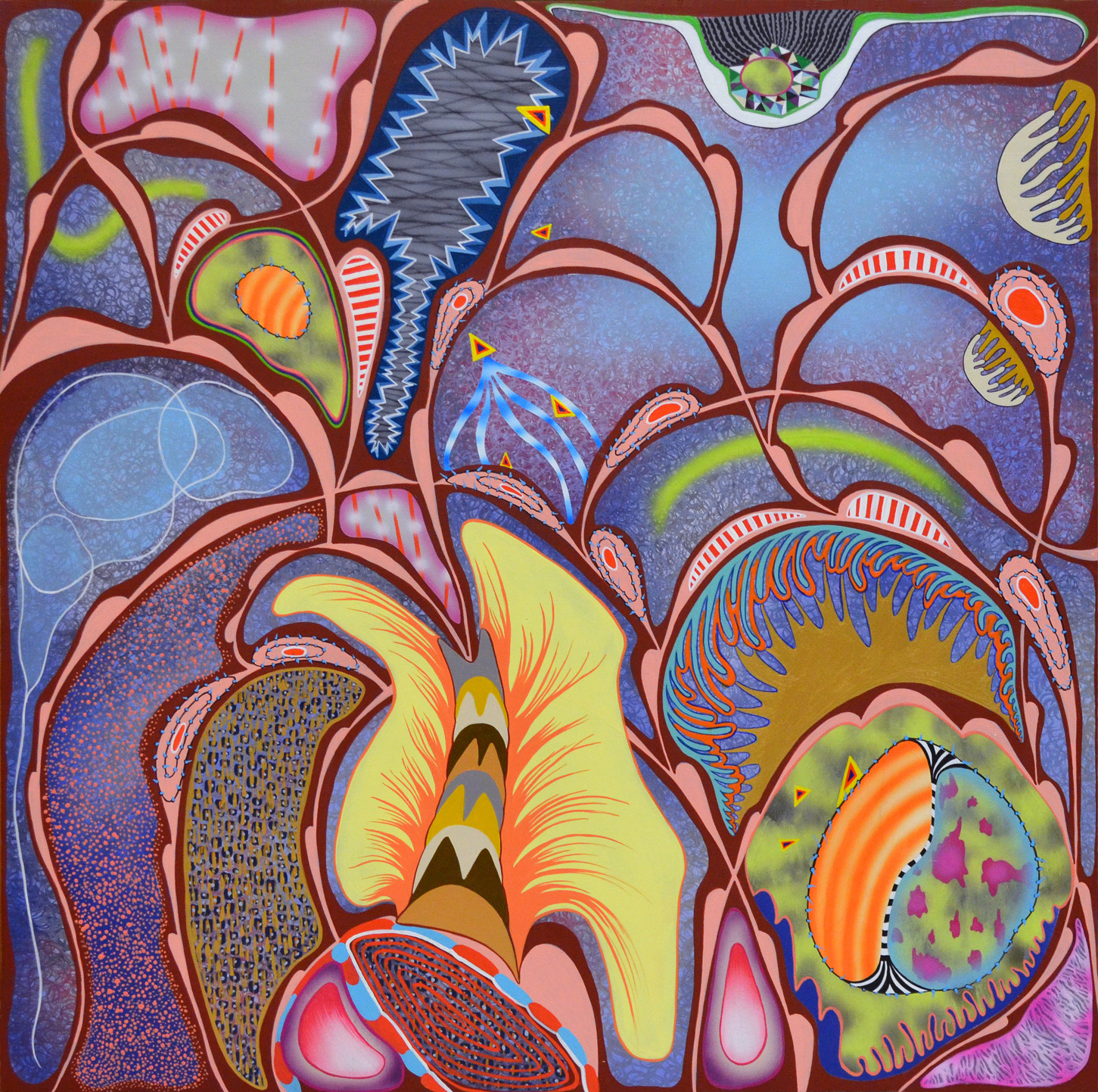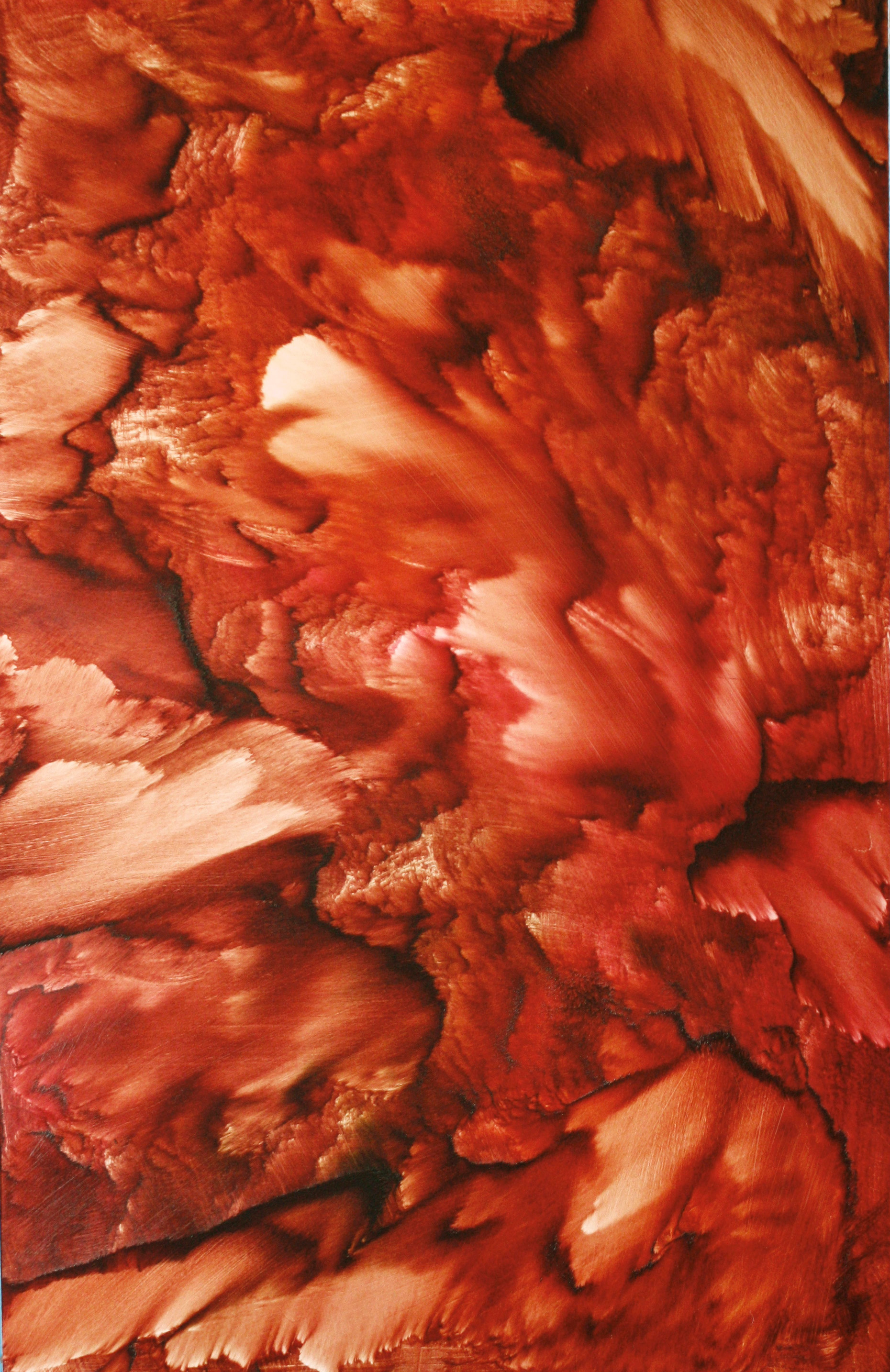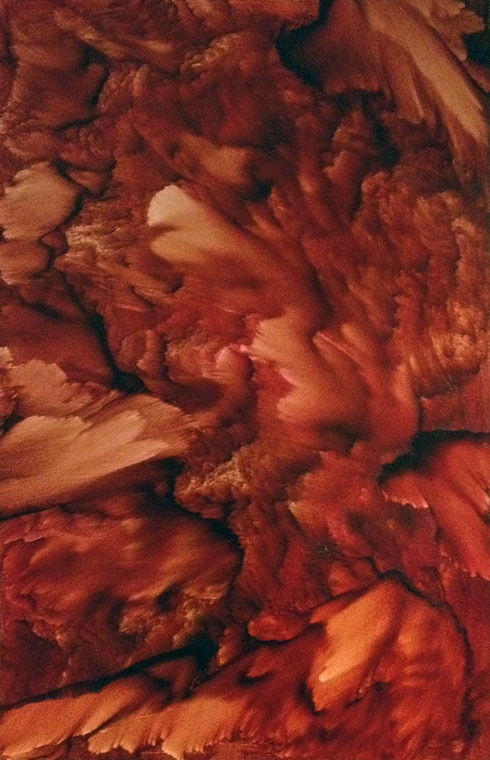Satellite Exhibition
ReMap:
Artists Investigate New Terrain
January – June 2014
My husband, a writer and historian, who dutifully and enthusiastically views each exhibition at the Linden Row Inn, never fails to observe that the two framed maps in the dining room do not depict geographical features of Richmond, but are of other Virginia locales. The idea for this exhibition was born when remembering this as I watched Studio Two Three's steamroller press the plate that created the wall-sized tapestry map of Richmond that is currently on view in the dining room. Traditionally, when considering a map, the paper (or plane) represents the surface of the earth. The artists exhibiting in ReMap demonstrate that surface and plane are opportunities to choose a different path in which to document their journey.
Studio Two Three, Richmond's nonprofit community print shop, set the goal of carving and printing the biggest map of Richmond ever made! The map was designed by a team of Richmond artists and designers, including Nelly Anderson, Emma Barnes, Kelsie Conley, Ajah Courts, Jacob Green, Ashley Hawkins, Ashley Moulton, and Jake Urbanski, as well as members of the art community, completing the carving at a First Friday event. The massive feat of printing the maps took place during a long weekend of heavy inking and steamrolling at the RVA Street Art Festival. A limited edition of 20 printed tapestries are for sale, in addition to smaller screen-printed versions.
Katie Baines' paintings fill each plane with forms that refer to topography. Abstract form can reference a coral reef, blade of grass, radioactive land mass, an oil spill or an architectural structure. Baines' paintings map "qualities of human behavior."
Rosemary Jesionowski's work is a continual investigation of place, land, and "how we identify ourselves through location. " The artist asks "How do we define ourselves by where we live? How do others define us? How does place define or even change us?"
Chris Mahonski's sculpture is informed by his experiences in the wilderness. "I go canoeing in the Great Dismal Swamp… There's a cypress I've paddled three quarters of my canoe inside of. I stand strait up in the skeleton of the tree, the wind howling through its caverns and water sloshing through its roots and knees recreating some dead guttural language. I get into these kinds of situations really hoping for a transcendent experience." His sculpture meditates on the pivotal point at which "we find ourselves as a species, made in mourning of what we might be leaving behind, but hopeful of the magic that awaits."
Katie Shaw began working on "The Atomic Series" in 2009, combining traditional American quilt patterns and symbols associated with the Atomic Era. Her work utilizes meticulous abstract simplicity to express the distance that can sometimes be felt within and between experiences, thoughts and objects. "They are a record of my efforts to understand the misgivings between morality and history and reality in terms of personal mythology."
Patricia Smith's drawings are focused on the mapping of actual locations, of internal and virtual spaces and texts. Her book of maps documents a process of weaving layers of text, spontaneous drawing and, in certain works, information transposed from city maps, "I attempt to give shape to the space within the mind, providing a logical designation on paper for the intangible. Along the way I uncover the absurdity that can be found folded within complex reasoning processes, while at the same time holding to the idealistic notion that there is refuge to be found in ordering the chaos of the mind."
Hilary Wilder's paintings and work on paper are informed by the history of romantic landscape painting with her current work on paper aspire to abstract that language. "These works rely on color, edge, and an ambiguous sense of pictorial depth to allude to a sense of place without denoting exact forms. Most of the paintings in this series were completed in Iceland, Ireland, and Texas, and their formal structures, textures, and palettes are meant to loosely correspond to the topography and the climate of those locations."
Kate Woodliff O'Donnell draws inspiration from the works of quilters of the past, seeking to build new dimensions of form, design, and meaning into the quilt medium. "I often think a lot about how making a quilt can be a metaphor for how we live our lives." A quilt can be a map of patience, love, memory, imagination, joy or even sorrow.
Kim Young is attracted to found objects, especially items that have been discarded or abandoned—maps, text, topography and patina. "I enjoy pushing the boundary between what's ordinary and what's extraordinary. I want my work to encourage others to do the same."
Amie Oliver
1708 Gallery Satellite Exhibitions Liason and Curator









